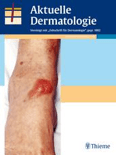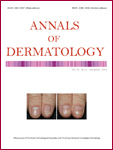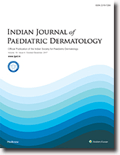
Indian Journal of Dermatology Venereology & Leprology
Scope & Guideline
Advancing Knowledge in Skin Health and Infectious Diseases
Introduction
Aims and Scopes
- Clinical Dermatology Research:
Focuses on original research related to various skin conditions, their clinical presentations, diagnostics, and treatment outcomes. - Innovative Therapies and Treatments:
Highlights studies on new treatment modalities, including pharmacological interventions, surgical techniques, and emerging therapies. - Epidemiological Studies:
Presents research on the prevalence, risk factors, and clinical characteristics of dermatological diseases, particularly in the Indian context. - Dermatopathology:
Investigates the histopathological aspects of skin diseases, contributing to the understanding of disease mechanisms and aiding in accurate diagnosis. - Sexually Transmitted Infections (STIs):
Explores the clinical features, management, and epidemiology of STIs, reflecting the journal's commitment to public health concerns in dermatology. - Leprosy Research:
Dedicated to the study of leprosy, including its clinical features, treatment responses, and societal impacts, addressing a significant public health issue in India. - Educational Innovations in Dermatology:
Focuses on advancements in dermatology education, including the integration of technology and new teaching methodologies.
Trending and Emerging
- Teledermatology and Digital Health:
The rise of teledermatology, particularly in response to the COVID-19 pandemic, has led to increased research on virtual consultations, remote diagnosis, and management of skin conditions. - Biologics and Targeted Therapies:
There is a growing body of research on the use of biologic agents and targeted therapies for chronic skin diseases such as psoriasis and atopic dermatitis, reflecting advancements in treatment options. - Psychodermatology:
An emerging focus on the psychological aspects of skin diseases, including the impact of skin conditions on mental health and quality of life, has gained traction in recent studies. - Antifungal Resistance in Dermatology:
With rising concerns about antifungal resistance, research exploring the efficacy of antifungal treatments and resistance patterns has become increasingly prominent. - Global Health Perspectives:
A trend towards addressing global health issues, such as the burden of skin diseases in low-resource settings, and the intersection of dermatology with public health initiatives. - Epidemiological Studies on Emerging Infectious Diseases:
Research on newly emerging infectious diseases, including monkeypox and other zoonotic infections, is becoming more prevalent, reflecting global health concerns.
Declining or Waning
- Traditional Treatments for Skin Diseases:
There appears to be a waning interest in studies focusing solely on traditional or historical treatments for skin conditions, as the emphasis shifts towards novel therapies and evidence-based practices. - Generalized Dermatological Conditions:
Research on broad categories of skin diseases without specific focus has seen a decline, as the journal increasingly favors specialized studies that address particular conditions or patient populations. - Basic Science Research:
There has been a noticeable reduction in purely basic science studies, with a greater emphasis on clinical applications and translational research that directly impacts patient care.
Similar Journals

Turk Dermatoloji Dergisi-Turkish Journal of Dermatology
Empowering skin health through innovative research.Turk Dermatoloji Dergisi-Turkish Journal of Dermatology, published by Wolters Kluwer Medknow Publications, is a prominent platform dedicated to advancing the field of dermatology in Turkey and beyond. With an ISSN of 1307-7635 and an E-ISSN of 1308-5255, this journal plays a vital role in disseminating contemporary research and clinical advancements within the domain. While it is positioned in the Q4 quartile of dermatology journals, its contributions are essential for academics, medical practitioners, and students averse to the latest trends and breakthroughs in skin health. The journal assures accessibility to a broad audience, fostering knowledge exchange, collaboration, and innovation. Given its unique perspective rooted in Turkish dermatological practices, the Turkish Journal of Dermatology serves as a significant resource for enhancing professional competence and driving forward the science of dermatology through its vivid discussions and case studies. For researchers seeking a dedicated venue to publish their work or for professionals eager to stay informed, this journal is an indispensable resource in the ever-evolving landscape of dermatology.

AKTUELLE DERMATOLOGIE
Advancing Dermatological Knowledge for Tomorrow's CareAKTUELLE DERMATOLOGIE is a distinguished journal in the field of Dermatology, published by GEORG THIEME VERLAG KG in Germany. With a commitment to advancing knowledge and practice in dermatological science, the journal has regularly featured research articles, reviews, and case studies since its inception in 1975 and continues to publish contributions through 2024. Despite being categorized in the lower quartile (Q4) of dermatology journals and holding a Scopus rank of #127 out of 142, it plays a pivotal role in disseminating valuable insights that support ongoing education and research in the discipline. The journal provides an essential platform for both seasoned professionals and budding researchers to share their findings, explore emerging trends, and discuss clinical practices, all while serving the needs of an evolving medical landscape. Access to its content may be restricted, but the journal remains a crucial reference for those invested in the future of dermatological research and patient care.

Acta Dermatovenerologica Croatica
Bridging Knowledge Gaps in Dermatology and VenereologyActa Dermatovenerologica Croatica is a premier journal dedicated to the fields of dermatology and venereology, published by the Croatian Dermatovenereological Society. Established in 1994, this journal has been a vital platform for disseminating research and advancements in the understanding and treatment of skin diseases and sexually transmitted infections. Although it is currently classified in the Q4 quartile for dermatology, infectious diseases, and miscellaneous medicine, it provides a unique opportunity for emerging researchers and seasoned professionals to contribute to a growing body of knowledge. Based in Zagreb, Croatia, the journal emphasizes free access to information that enhances clinical practices and scientific understanding among dermatologists and venereologists worldwide. As the journal approaches its 30th anniversary, it continues to aim for excellence in research quality, fostering collaboration, and innovating in the ever-evolving fields it represents.

Turkderm-Turkish Archives of Dermatology and Venerology
Fostering Excellence in Skin Health ResearchTurkderm - Turkish Archives of Dermatology and Venerology, published by GALENOS PUBL HOUSE, serves as a vital platform for the dissemination of innovative research and advancements in the fields of dermatology and venerology. With an Open Access policy implemented since 2002, this journal aims to provide free and unrestricted access to significant findings, ensuring that vital information reaches a global audience. Based in Turkey, the journal has positioned itself as an important resource for professionals, researchers, and students alike, despite currently being categorized in Q4 of both Dermatology and Infectious Diseases as per the 2023 metrics. Although it faces competition in the rankings, with a Scopus standing of #131 in Dermatology and #331 in Infectious Diseases, its dedication to advancing knowledge in these critical health areas is unwavering. The journal continually invites original research, reviews, and case studies that enhance clinical practices and foster understanding in the dermatological community.

Annals of Dermatology
Transforming the landscape of dermatological knowledge.Annals of Dermatology is a prestigious academic journal published by the Korean Dermatological Association, focusing on the latest research and advancements in the field of dermatology. With a commitment to advancing knowledge in skin health and disease, this journal serves as a vital resource for researchers, clinicians, and students working in dermatology and related disciplines. Since its inception in 1989, it has evolved to consolidate its position in the academic community, boasting a Q2 ranking in the 2023 Dermatology category and a Scopus rank of #87 out of 142, placing it in the 39th percentile. Although it operates under a subscription model, the journal's impact factor reflects its significance in advancing dermatological research, attracting innovative studies and reviews that shape clinical practice. With a publication history extending from 1989 to 1996 and then from 2008 to the present, Annals of Dermatology continues to be an essential publication for those devoted to improving skin health.

CONTACT DERMATITIS
Leading the Way in Dermatological ResearchCONTACT DERMATITIS, published by WILEY, is a leading international journal focused on the vital field of dermatology, particularly examining the diagnosis, treatment, and management of contact dermatitis and related skin conditions. With origins dating back to 1975 and a planned convergence period extending to 2024, this esteemed journal serves as a crucial resource for researchers, clinicians, and healthcare professionals dedicated to advancing knowledge in dermatological practices. In the latest rankings, it has achieved a commendable Q2 classification in Dermatology and Q3 classification in Immunology and Allergy for 2023, underscoring its significance within these dynamic fields. Moreover, it holds a notable ranking of #29/142 in Medicine & Dermatology and #130/233 in Medicine & Immunology and Allergy according to Scopus metrics, placing it in the top tier of scholarly publications. While the journal operates on a subscription basis, its comprehensive reviews, original articles, and insightful research findings are invaluable for pushing the boundaries of current dermatological and immunological knowledge. By fostering a deeper understanding of the complexities of skin reactions and their implications, CONTACT DERMATITIS plays a vital role in connecting research with clinical practice, making it an essential read for anyone engaged in the field.

BRITISH JOURNAL OF DERMATOLOGY
Leading the way in dermatology innovation.The British Journal of Dermatology, published by Oxford University Press, stands as a premier platform for advancing the field of dermatological research and clinical practice since its inception in 1892. With a strong commitment to disseminating high-quality research, this esteemed journal is currently ranked in the Q1 category for both Dermatology and Miscellaneous Medicine in 2023, reflecting its influential position in the academic landscape. As the leading journal in its field, it enjoys a robust Scopus ranking of #1 out of 142 in dermatology, placing it in the 99th percentile globally. The journal covers a wide scope of subjects pertinent to dermatology, including clinical trials, treatment innovations, and epidemiological studies, making it an essential resource for researchers, healthcare professionals, and students alike. Although it is not an open-access publication, it ensures a broad reach through institutional subscriptions, fostering knowledge exchange across the global dermatological community. Based in the heart of the United Kingdom, the British Journal of Dermatology continues to play a crucial role in shaping the future of skin health and disease management.

Egyptian Journal of Dermatology and Venereology
Transforming the Landscape of Skin Disease ResearchEgyptian Journal of Dermatology and Venereology is a premier peer-reviewed journal dedicated to advancing the fields of dermatology and venereology. Published by Wolters Kluwer Medknow Publications, this journal provides a vital platform for researchers, clinicians, and healthcare professionals to share cutting-edge research, case studies, and reviews that contribute to the understanding and treatment of skin and sexually transmitted diseases. With an ISSN of 1110-6530 and an E-ISSN of 2314-7407, the journal ensures global accessibility and visibility of its content, fostered by its commitment to high-quality publications. Although it operates with restricted access, the Egyptian Journal of Dermatology and Venereology remains an essential resource for practitioners and academics alike, supporting the dissemination of knowledge and innovation in skin health. Situated in Mumbai, India, the journal reflects a diverse pool of contributions that enrich our understanding of dermatological practices and principles on an international scale.

Indian Journal of Paediatric Dermatology
Transforming insights into practice for young patients.Indian Journal of Paediatric Dermatology (ISSN: 2319-7250; E-ISSN: 2319-7269), published by Wolters Kluwer Medknow Publications, stands as a pivotal resource in the specialized field of paediatric dermatology. As a peer-reviewed open access journal since 2013, it aims to disseminate cutting-edge research, clinical practices, and innovative developments that cater to the specific dermatological needs of children. The journal provides an essential forum for collaboration among researchers, clinicians, and students, facilitating the sharing of knowledge on a wide array of topics, including skin conditions unique to paediatric populations, treatment methodologies, and advancements in dermatological care. With a commitment to enhancing the understanding and treatment of paediatric skin diseases, this journal plays a critical role in shaping best practices and informing future research directions in a rapidly evolving field.

ANNALES DE DERMATOLOGIE ET DE VENEREOLOGIE
Pioneering Research in Dermatology and VenereologyANNALES DE DERMATOLOGIE ET DE VENEREOLOGIE is a distinguished journal that serves as a vital platform for disseminating innovative research and insightful reviews in the field of dermatology and venereology. Published by MASSON EDITEUR, this journal has been a cornerstone for professionals and researchers since its inception in 1977, offering a wealth of knowledge that spans decades. With its ISSN 0151-9638 and E-ISSN 2214-5451, it is indexed within leading databases, ensuring that the published work reaches a broad audience. The journal currently holds a Q3 ranking in the dermatology category, reflecting its commitment to quality and rigorous peer-review processes. While the journal is not open access, it provides an extensive archive of valuable studies that contribute to advancements in skin health and treatment methodologies. Located in Issy-les-Moulineaux, France, ANNALES DE DERMATOLOGIE ET DE VENEREOLOGIE continues to attract submissions from esteemed professionals, enhancing its reputation as a crucial resource for those dedicated to the ongoing development of dermatological sciences.